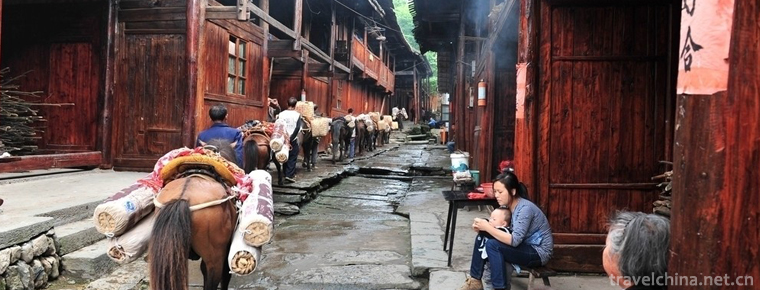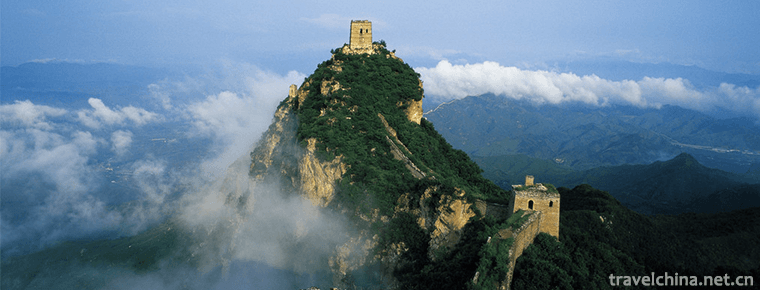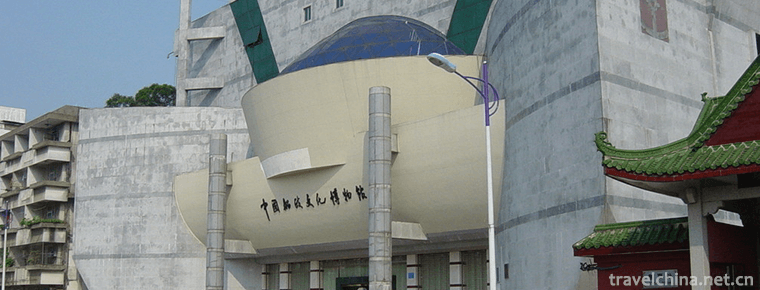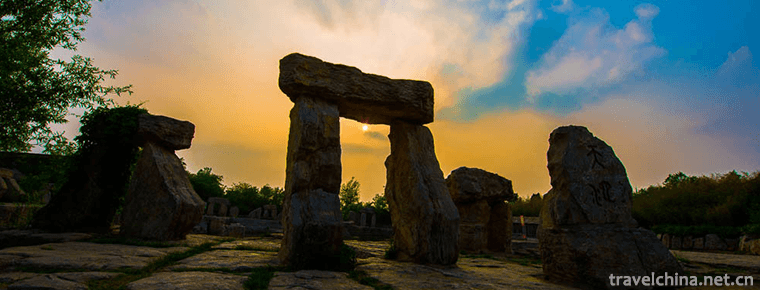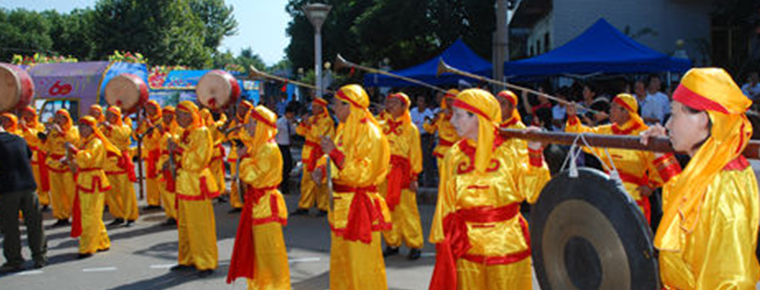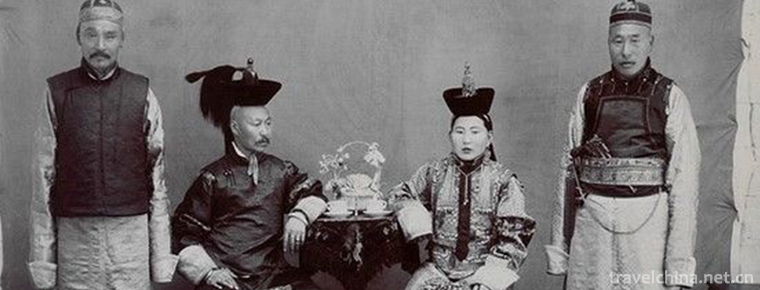Sacrifice Aobao
Sacrifice Aobao
Aobao sacrifice is a traditional custom of Mongolian people, and one of the manifestations of prairie people's natural worship. Xilinguole League is a relatively complete preservation area of historical relics of Aobao Festival. Aobao, also known as "brain bag" and "Obo" advocated by the Mongolian people, means "heap". It is made up of stones, which are usually built on top of hills or hills. Its shape is mostly conical and its height varies. Ulat flag and other places.
On May 20, 2006, Aobao Sacrifice, declared by Xilingol League of Inner Mongolia Autonomous Region, was approved by the State Council to be included in the first batch of national intangible cultural heritage list (category: folklore; number: X-40).
brief introduction
Aobao is Mongolian, meaning heap or drum. One of the grand sacrificial activities of the Mongolian people. Aobao is usually located in the mountains or hills, with stones piled into a conical solid tower, with a long pole at the top, livestock horns and textile strips tied to the pole head, with burning cedar cushions on all sides; beside Aobao, there are branches for whole sheep, margarine, butter and cheese, etc. In ancient times, Shamanist wizards beat drums and chanted incense to worship and pray; in modern times, lamas burned incense to ignite incense and chanted sutras. The herdsmen circled Obo, turning three times from left to right, praying for God's blessing.
Aobao sacrifice: Mongolian sacrifice, the most solemn is Aobao sacrifice. Aobao is also known as "Obo", which means mound of earth, i.e. mound of stones and mound piled up artificially. Earlier, the Mongolian people believed that heaven and earth were the source of human survival, and worshipped them in particular. Because the gods of heaven and earth have no idols, people pile up Obo to symbolize, so Obo becomes people's worship. Through offering sacrifices to Aobao, people prayed to God of heaven and earth to bless the world with good weather, prosperous cattle and sheep, and peaceful country and people. The time for offering sacrifices to Obo is not fixed. Mongolian areas are mostly on the 13th of May in the lunar calendar. When offering sacrifices, first insert a branch or paper flag on Obo, hang colorful cloth strips on the branches, and write scriptures on the flag. There are four kinds of ceremonies: blood sacrifice, wine sacrifice, fire sacrifice and jade sacrifice. Blood sacrifice is the sacrifice of slaughtered cattle and sheep before Obo. It is believed that cattle and sheep are gifts from heaven and earth. Only by offering sacrifices to cattle and sheep can the grace of heaven and earth be repaid. Wine sacrifice is to sprinkle fresh milk, butter and milk wine on Obo. Fire sacrifice is to make a fire in front of Obo and put boiled cattle, mutton balls and meat pieces into it. People worship the fire. Jade sacrifice is the most beloved jade offering in ancient times. These sacrificial ways are all expressions of devotion to heaven and earth, and pray for heaven and earth to give people peace and happiness.
There are many traditional sacrificial activities of Mongolian people, such as offering sacrifices to heaven, offering sacrifices to fire, offering sacrifices to ancestors, offering sacrifices to Aobao, etc. Among them, offering sacrifices to Aobao is the most important sacrificial activity and one of the manifestations of prairie people's worship of nature. Xilinguole League is a relatively complete preservation area of historical relics of Aobao Festival.
Aobao sacrifice is a religious custom handed down from ancient times by the Mongolian people. It is held in the season of abundant water and grass every year. Aobao means heap of stones. That is to say, in the open and scenic mountainous highlands, a round solid tower is piled with stones, and a long pole with brass strips or animal fur horns is erected at the top. At that time, for cooked beef and mutton, the host delivered prayer speeches, men and women, old and young worship and pray, pray for good weather, human and animal safety. After the ceremony, horse racing, archery and wrestling are often held. Aobao Festival is a Mongolian commemoration of the birthplace of Erguna Mountain Forest Zone formed to express their attachment to their ancestral land and infinite respect for their ancestors. The most important sacrificial ceremony of Shamanism has evolved into an annual festival.
"Aobao" is a Mongolian phonetic translation, also known as "Obo", "Brain Pack", "Pile", "Stone Pile" and "Drum Pack". In Chinese, it means "Pile". Obo was built with stones and heaped with earth. Most of them are built on top of hills and hills. They are generally round, with wickers inserted at the top, which resemble beacon towers. Volume 9 of National Customs Chronicles of China says, "Obo is everywhere... Its shape is round, its top, upside down cube corner Mongolian classical banner, the upper and lower buried Hada side, five kinds of grain, silver, a sacrifice every year. "
In the minds of herdsmen, Obo symbolizes that God is in the throne and is hereditary. In the past, all the banners, sapphire and temples in Inner Mongolia had their own public Aobao, and wealthy families had their own Aobao. Each Aobao had its own name. Ruan Kui-sheng's Story of Geomancy in Jilin, Mongolia, said: "The stone mound is like a mountain mound, hanging silk to pray, while the newspaper contest is planted with a wooden watch, which is called'Obo'. No one dares to commit a crime. "Aobao, in the eyes of Mongolian herdsmen, is a sacred place.
Originally, Aobao was built in tribal units. Every time people go on a journey, they will get off their horses to worship Obo and pray for peace wherever there is Obo. And add a few stones or handfuls of earth to Obo, and then cross the road. With the spread of Lamaism in Mongolian society, in the Qing Dynasty, there was a custom of holding an annual tribal meeting to sacrifice Aobao. Sacrifices are usually held from mid-May to July and August of the lunar calendar.
Legend
There is no evidence about the origin of offering sacrifices to Obo. But there is a moving legend among the people. It was a long time ago that the Mongolian herdsmen lived a life of nomadic hunting. People's funerals have always been celestial burials. The dead bodies are placed on wooden "Le Le Car" and drifted aimlessly on the grasslands. When the dead bodies fall down, they are buried in the open naturally anywhere. Herdsmen miss their relatives, and every year they want to mourn the place where their relatives are buried. But the vast grassland, where to find a burial place? As a result, with the further understanding of nature and animals. They came up with a way to bury their loved ones. They took a hump with them in the car and released part of the lamb's blood at the place of burial. The next year, the mother of the camel or the two-year-old camel will be taken along the general direction and route to find. If a mother camel or a lamb is found somewhere unwilling to move forward or mourn, it is the place where relatives are buried. At this time, the shepherd will base a few stones or worship a few handfuls of soil, to sacrifice relatives, for the blessings of relatives. In this way, from generation to generation, Aobao has been formed. At the same time, the form and content of Aobao Festival evolved with the development of the times, forming today's "Aobao Festival".
Significance
In the early Ming and early Qing Dynasties, Tibetan Buddhism gradually replaced Shamanism and became the national belief of the Mongolian people. Therefore, Lamas and chanting scriptures became the main role and important content of the Aobao sacrificial activities. In addition, Tibetan Buddhist activities also cover all aspects of Mongolian daily production and life.
Following the primitive religious beliefs of their ancestors, the Mongolian people believed that the mountain was so tall and magnificent that there was a way to heaven, and that the mountain was also the place where the imaginary gods lived. Therefore, the worship of the mountains and the prayers of the gods are expressed in the form of offering sacrifices to Obo. With the development of society, the progress of science and the renewal of herdsmen's ideas, today's sacrifice to Aobao has changed in its content and form.
Aobao sacrifice is the epitome of the ancient Mongolian culture. A series of activities and rituals related to Aobao sacrifice embody the creativity of the Mongolian nation. As a cultural space, offering sacrifices to Aobao includes many Mongolian traditional cultures and customs, which is of great value to the study of nomadic culture and the development history of Mongolian nationality. To excavate, rescue and protect Aobao is also of great significance for promoting the identification of Chinese culture, enhancing social cohesion, promoting national unity and social stability.
The State attaches great importance to the protection of intangible cultural heritage. On May 20, 2006, the folklore was approved by the State Council and listed in the first batch of national intangible cultural heritage lists.
Solemn sacrifice
A sacrificial activity of the Mongolian people. "Aobao" means "heap" in Mongolian. Pile, originally a symbol of road and realm, later evolved into a symbol of heaven and earth or mountain god worshipped by Mongolian and other nationalities.
In hilly or mountainous areas, a circular stone pagoda is built with stones. There are statues or Buddhist Sutras in it. At the top, a long pole is erected, and on the top, banners, bows and arrows are inserted. The God of Obo was regarded as the patron saint of the clan. In the old days, pedestrians would dismount and offer money for wine and meat, or cut off the mane and tail of the horse and tie it to it. More sacrifices are held in summer and autumn when grass is abundant, livestock is strong and the climate is pleasant. The ceremony is grand. At that time, people will bring Hada and whole mutton, milk wine, milk food and other sacrifices, gather in Obo, first offer Hada and sacrifices, then pray by lamas, kneel down to pray, add stones or wickers to Obo to repair, and hang new five-color silk cloth strips and sutras. There are four sacrificial rituals: blood sacrifice, wine sacrifice, fire sacrifice and jade sacrifice. After the ceremony, people gathered around a place to drink horse milk, eat mutton, and hold horse racing, wrestling, archery and other sports activities. The Ewenki and Daur nationalities also have this kind of sacrificial custom.
Aobao is a Mongolian phonetic translation, meaning "heap" that is manually piled up into a heap of stones. Generally built on the top of the grassland or hills, stones are piled up on the altar as a platform, overlapping on the base of the platform as a cone, about ten feet high. Aobao can be seen everywhere in Inner Mongolia prairie, which is divided into separate Aobao and group Aobao. In the old days, some wealthy people also had "Jiaaobao".
Since ancient times, there have been four rituals for offering sacrifices to Obo.
The blood sacrifice originated from the belief of the Mongolian people. It is said that in the nomadic times, all the livestock of the Mongolian families were given by heaven and earth. Therefore, in order to repay the gifts of the gods, they slaughtered livestock and worshipped them in front of Obo.
It is said that the gods of heaven and earth not only like eating meat, but also like drinking and drinking milk. Therefore, wine or milk is sprinkled in front of the Obo altar during the sacrifice.
Fire sacrifice, according to legend, Mongolians believe that fire can expel all troubles from evil. When offering sacrifices, the herdsmen approached the fire (burning cow and sheep dung) and read their surnames and put sacrifices into the fire.
Jade sacrifice, the ancient Mongolians are precious for jade, so we should use jade to sacrifice gods, to express their piety. Nowadays, although ancient jade sacrifices are no longer fully practiced, some relics of jade sacrifices are still preserved in many areas of Inner Mongolia. For example, this custom is reserved among the Mongolians in the New Balhu Banner of Hulunbeier League. Two or three days before the sacrifice, the Mongolian people filled silver pots with coins and fried rice in advance, and offered them under Obo during the sacrifice. An important part of the ceremony is to insert many willows into Obo, where a long pole decorated with jewelry must be erected. These jewels are the symbols of the jade sacrifice. People dedicate these precious treasures to the gods of heaven and earth in order to pray for good health and happiness in life.
The Mongolian sacrifice to Aobao is held on May 13 of the lunar calendar every year. At that time, Aobao planted branches closely, and hung colorful cloth strips and paper flags around them, which were written with scriptures. Incense burning and incense ignition, Lama chanting sutras and mantras, have strong national characteristics and religious color. After the ceremony, traditional horse racing, archery, wrestling and dancing were held. In addition, in order to pray for God to bless both human beings and livestock, the ceremony of Obo "Mirawule" is usually held when offering sacrifices to Obo. "Mirawule", in Mongolian, means the ritual of smearing grease. It is time for one person to read the prayer aloud, while the others to smear their bodies with grease and milk or mutually. Its purpose is to symbolize congratulations on the prosperity of livestock breeding and the prosperity of life.
There are many traditional sacrificial activities of Mongolian people, such as offering sacrifices to heaven, offering sacrifices to fire, offering sacrifices to ancestors, offering sacrifices to Aobao, etc. Among them, offering Aobao is the most important sacrificial activity.
In the old days, the ceremony of offering Aobao to Mongolians was usually held from May to July in the lunar calendar. Usually for a flag, a sapphire sole sacrifice, there are several sapphire, several flags joint sacrifice of Obo. At that time, temporary yurts will be set up in the vicinity of Aobao for days, and herdsmen from far and near will come to visit the whole family. After the introduction of the Lama, the Shamanism life-killing sacrifice was replaced by fruit sacrifice. Buddha statues were also hung in the temporary Mongolian yurts, offering beef, mutton, milk and wine, and burning incense and candles. When the sacrificial ceremony is officially held, living Buddhas or high-ranking lamas lead many lamas around the Oubao Sutra, accompanied by the masses (at this time women do not understand to participate). When offering sacrifices to Obo, the so-called "Mount Ar" (i.e. holy water) should also be taken and used to sprinkle the herds with the Holy water. After the sacrificial ceremony, entertainment began. Folk customs include horse racing, archery, wrestling and banquets. Trade activities are also carried out. After the increase of entertainment projects, both men and women can participate, called "Obaonairi" (that day, Mongolian, meaning a grand occasion), and gradually become the traditional "Nadam" conference.
prairie style
As one of the representative forms of Mongolian culture, Aobao has reached the level of household awareness and well-known to women and children through the media. A Mongolian folk song "The Meeting of Aobao" is the promotional degree that Aobao culture reaches its peak and reaches its peak. It is red to the north and south of the Yangtze River.
On the endless grassland, we often see huge heaps of stones accumulated with large and small stones, with willows inserted on them. This is called the divine tree, and the divine tree has colorful god's covenants inserted in it. Huge piles of stones stand on the grassland. Bright gods call the herdsmen in the distance like arms. This is Obo.
Aobao, also known as "Obo", "Brain Pack", "Pile", "Stone Pile", "Drum Pack". It refers to a circle of stones piled up in a quiet place in a nomadic area of one's own. "China's National Customs Zhimian Rong" Yun: "Obo is everywhere... Its shape is round, its apex, upside down cubic angle Mongolian classical banner, and its upper and lower sides are buried Hada side, five kinds of grain, silver, a sacrifice every year. Ruan Kwai-sheng's "Mongolian Jilin Local Records" said: "The stone elephant mound, hanging silk so as to pray, the newspaper is planting a wooden watch, known as Obo, passers-by dare not commit crimes." Obo, in the eyes of Mongolian herdsmen, is a sacred place.
Other information
One of the grand sacrifices of Mongolian Shamanism is traveling in Inner Mongolia grasslands. It is common to see a single or group of "stone mounds" built on the vast fields, which resemble "Tubu". This is the Mongolian Aobao, a Mongolian phonetic translation meaning "mound". In rocky areas, Aobao is made of stones. Where there are no stones, Obo is made of sand and surrounded by willows. A long pole was inserted at the top, with animal horns and classical cloth strips tied to the pole head, stones for burning cedar on all sides, and branches beside Obo for whole sheep, margarine, butter and cheese. There are often Buddha statues or metal arrows buried in Obo.
Originally, Aobao was used as a landmark or landmark on the grassland. Over time, it was regarded as the God of safety for the herdsmen to go out and become a local god of protection. According to legend, before Genghis Khan's every expedition, the first major event was to sacrifice Aobao to pray for triumph in battle. Afterwards, soldiers who had made meritorious or heroic sacrifices in battle were also included in the sacrificial offerings. To offer sacrifices to Aobao, there are individual sacrifices and public sacrifices organized by local governments. The herdsmen revolved around Obo, turning three times from left to right, and prayed for God's blessing. Following the primitive religious beliefs of their ancestors, Mongolian herdsmen believed that there was a way to heaven because of the magnificence of the mountains, and that the mountains were the places where the imaginary gods lived, so they worshipped the mountains and prayed to the gods in the form of offering sacrifices to Aobao. When a pedestrian passes by Obo, he must dismount and walk, or pick up a few pieces of earth and stones and put them on Obo, or offer offerings or belongings. Then, kneel down and worship Obo, and pray for blessings and peace.

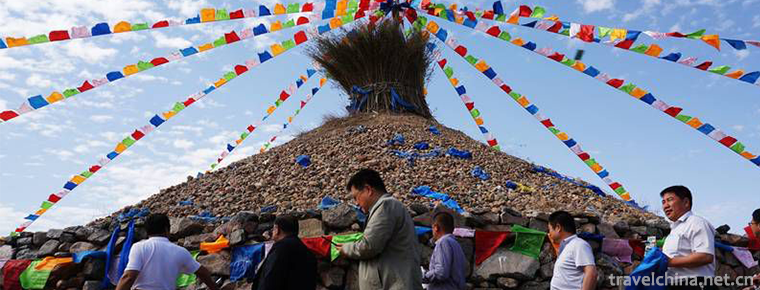
-
Tea horse ancient road
Tea-horse ancient road refers to the folk international trade.
Views: 217 Time 2018-10-17 -
Mount Jiuhua Scenic Area
Jiuhua Mountain Scenic Spot is located in Anhui Province, China. The northwest is across the Yangtze River and Tianzhu Mountain, and the Southeast .
Views: 110 Time 2018-12-08 -
The Simatai Great Wall
Simatai Great Wall is located in the north of Simatai Village, Gubeikou Town, northern Miyun District, Beijing. It is adjacent to Gubeishui Town. The wall of Simatai Great Wall is built on the steep m.
Views: 148 Time 2018-12-10 -
Mawei Shipping Museum
The Mawei Shipbuilding Cultural Heritage Group in Fuzhou is centered on the Chinese Shipbuilding Cultural Museum, including Zhongpo Battery, Zhaozhong Temple, British Consulate.
Views: 206 Time 2019-02-06 -
Wangcheng in heaven
Tianwangcheng Scenic Area is located 40 kilometers northwest of Yishui County, Linyi City, Shandong Province. The main part of the Scenic Area is located in Jiwanggu. It is the national AAAA scenic sp.
Views: 102 Time 2019-02-21 -
Fengyang flower drum
Fengyang flower drum is also known as "flower drum", "beating flower drum", "flower drum gong", "double drum" and so on. Fengyang flower drum originated in Linh.
Views: 331 Time 2019-04-29 -
Nanyin Rap
Nanyin rap is a form of rap sung in Guangzhou dialect. It is also a common melody in Cantonese opera and Cantonese opera. It is said that Nanyin rap was developed on the basis of wooden fish and drago.
Views: 280 Time 2019-06-07 -
Shengzhou Blows
Shengzhou blowing is one of the main components of "gong and drum in eastern Zhejiang". "Zhedong Gong and drum" generally refers to the traditional folk instrumental music in easte.
Views: 155 Time 2019-06-14 -
Tauk Taohu
Tao Ketaohu (May 13, 1864-April 1922), also translated as "Tao Ketao", Fuer Zhijin, Mongolian, the former Banner of Guoerros in Zhelimu League, Mongolian subordinate aristocrat of Nezhazazak.
Views: 97 Time 2019-06-18 -
Southwest Jiaotong University
Southwest Jiaotong University is a national key university directly under the Ministry of Education. The first batch of national "double first-class", "211 project", "characte.
Views: 160 Time 2019-08-31 -
China University Of Geosciences
China University of Geosciences is known as "Da Da". Ministry of Education of the People's Republic of China Directly under National Key Universities It's the state. 211 Project ",".
Views: 178 Time 2019-12-08

